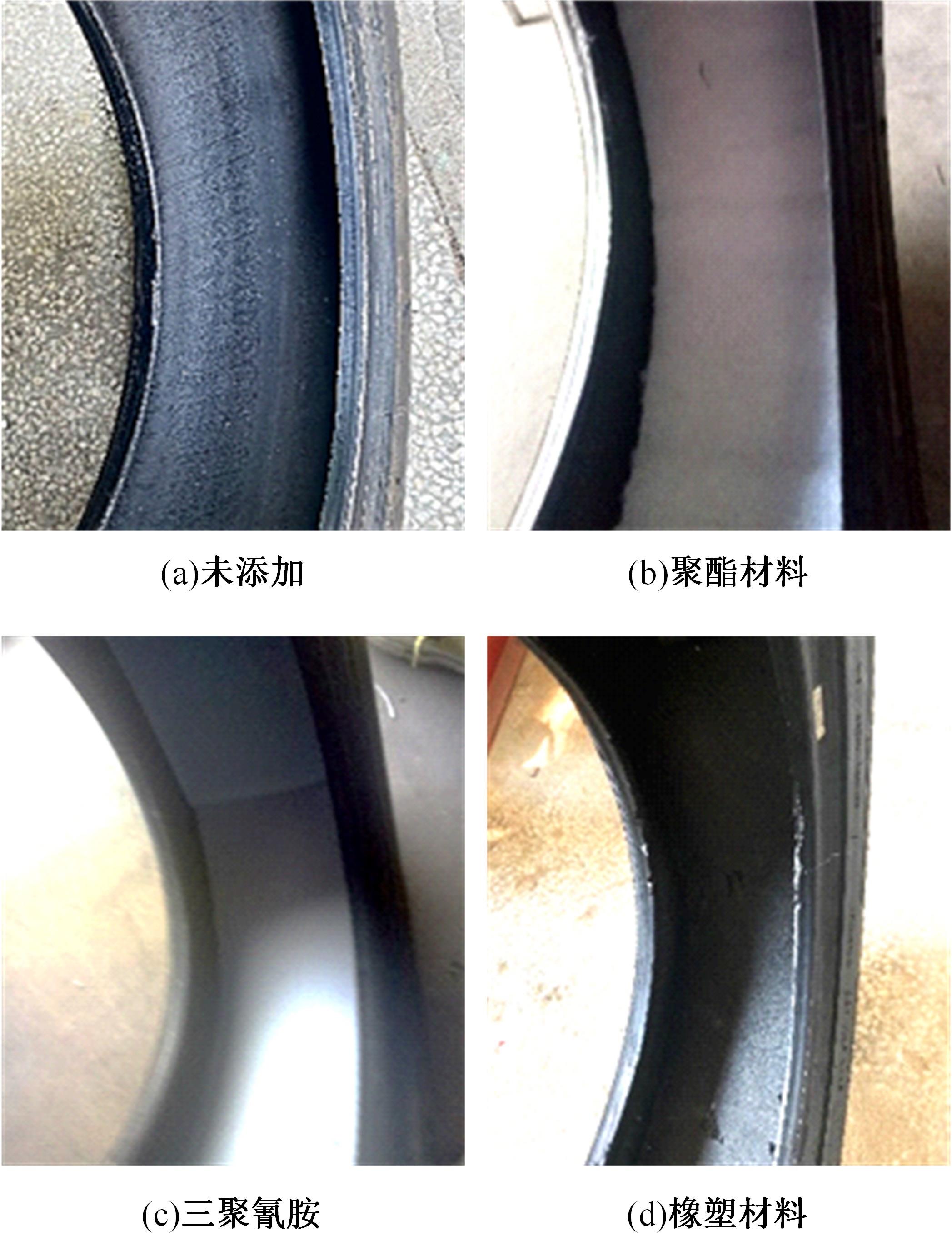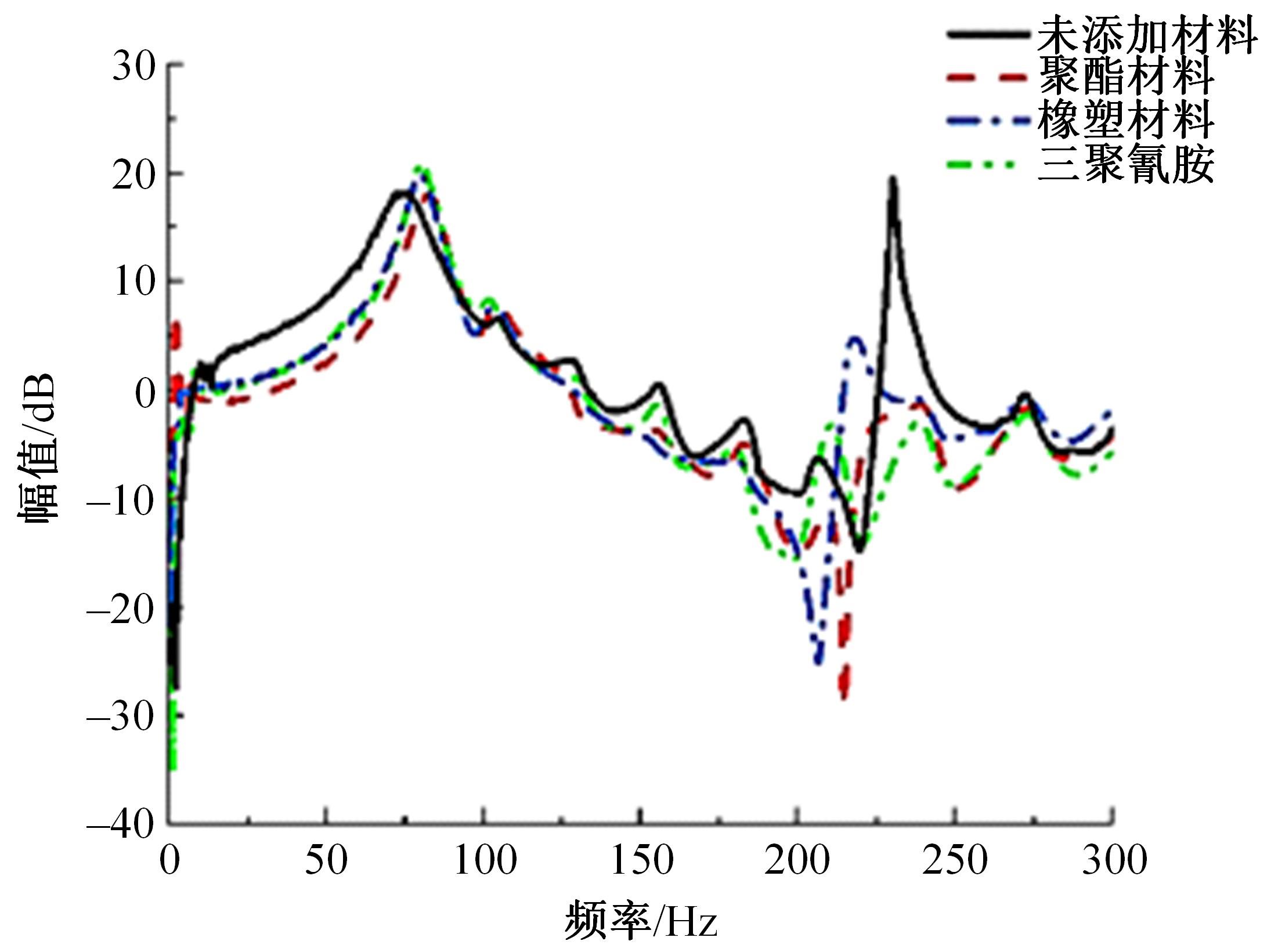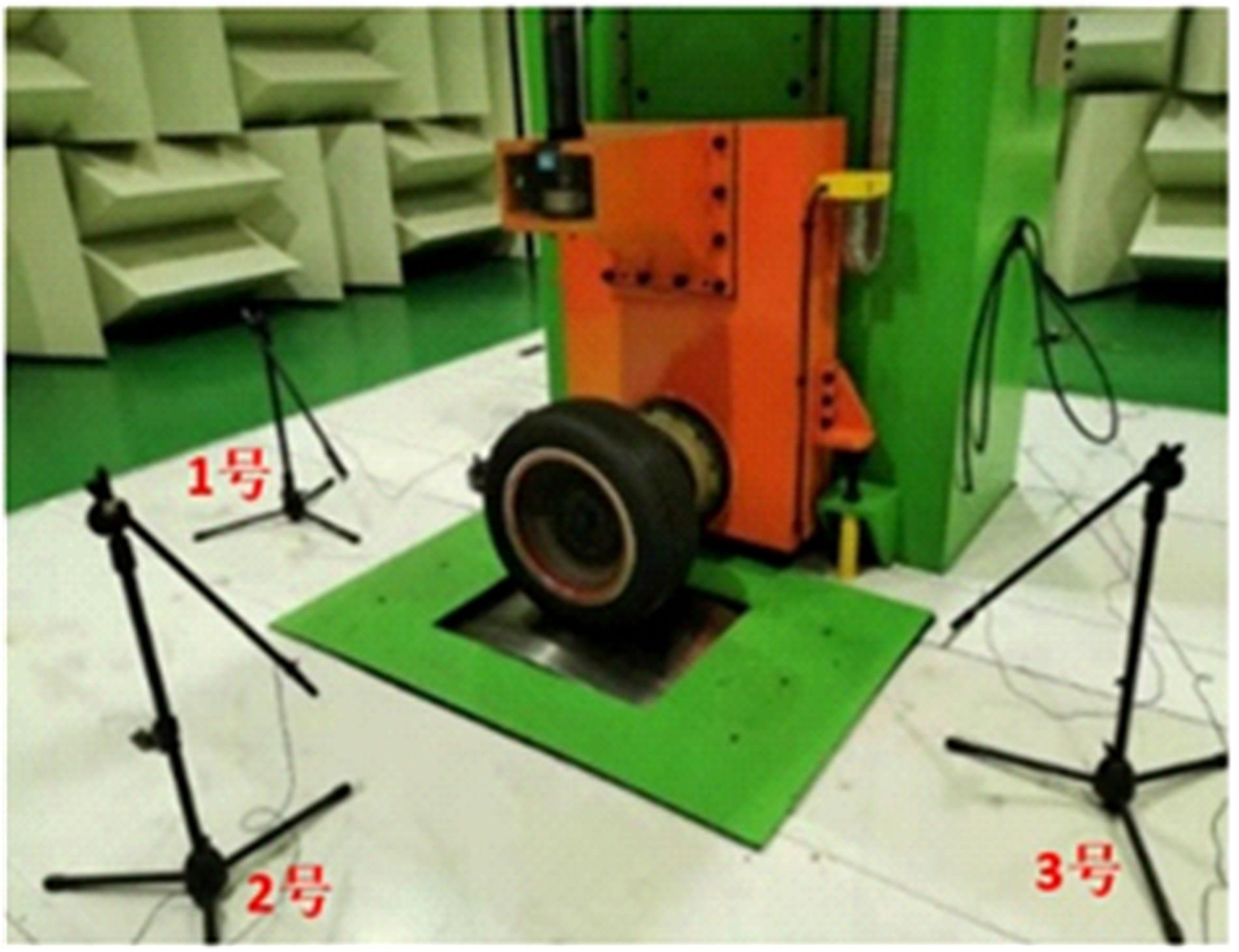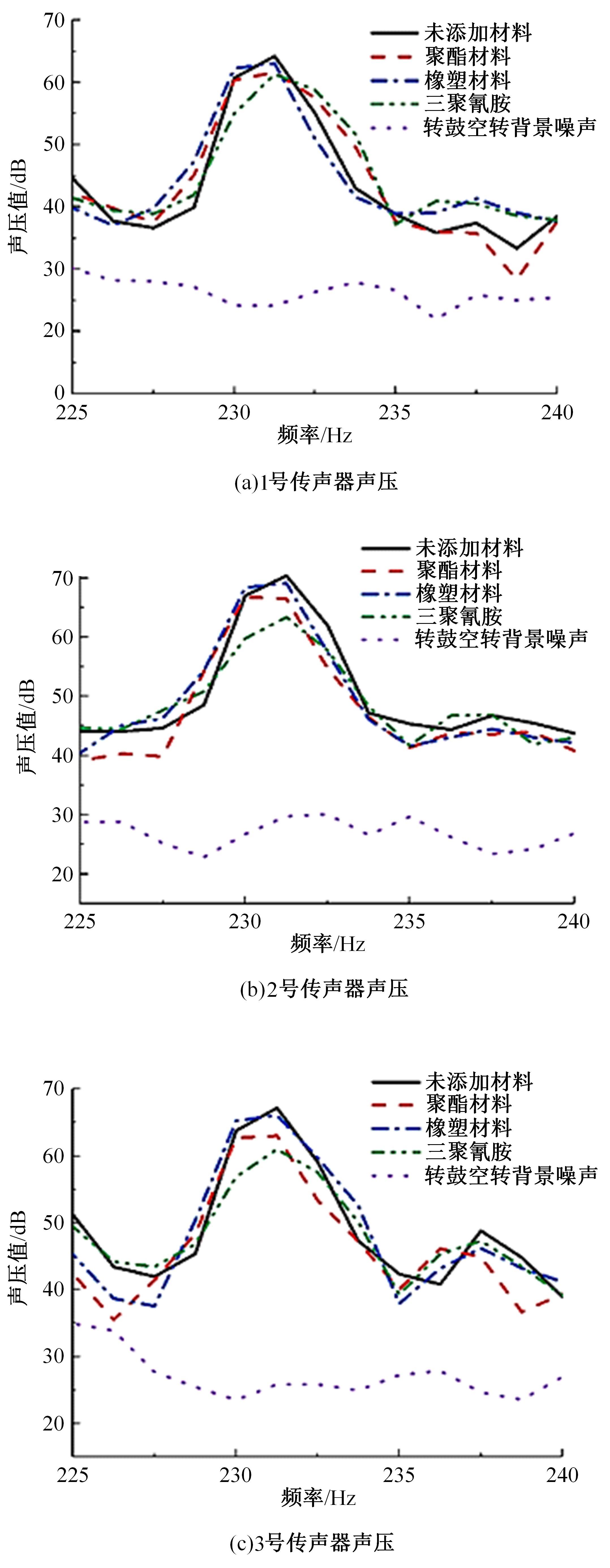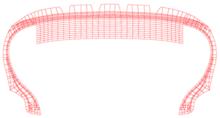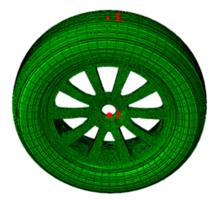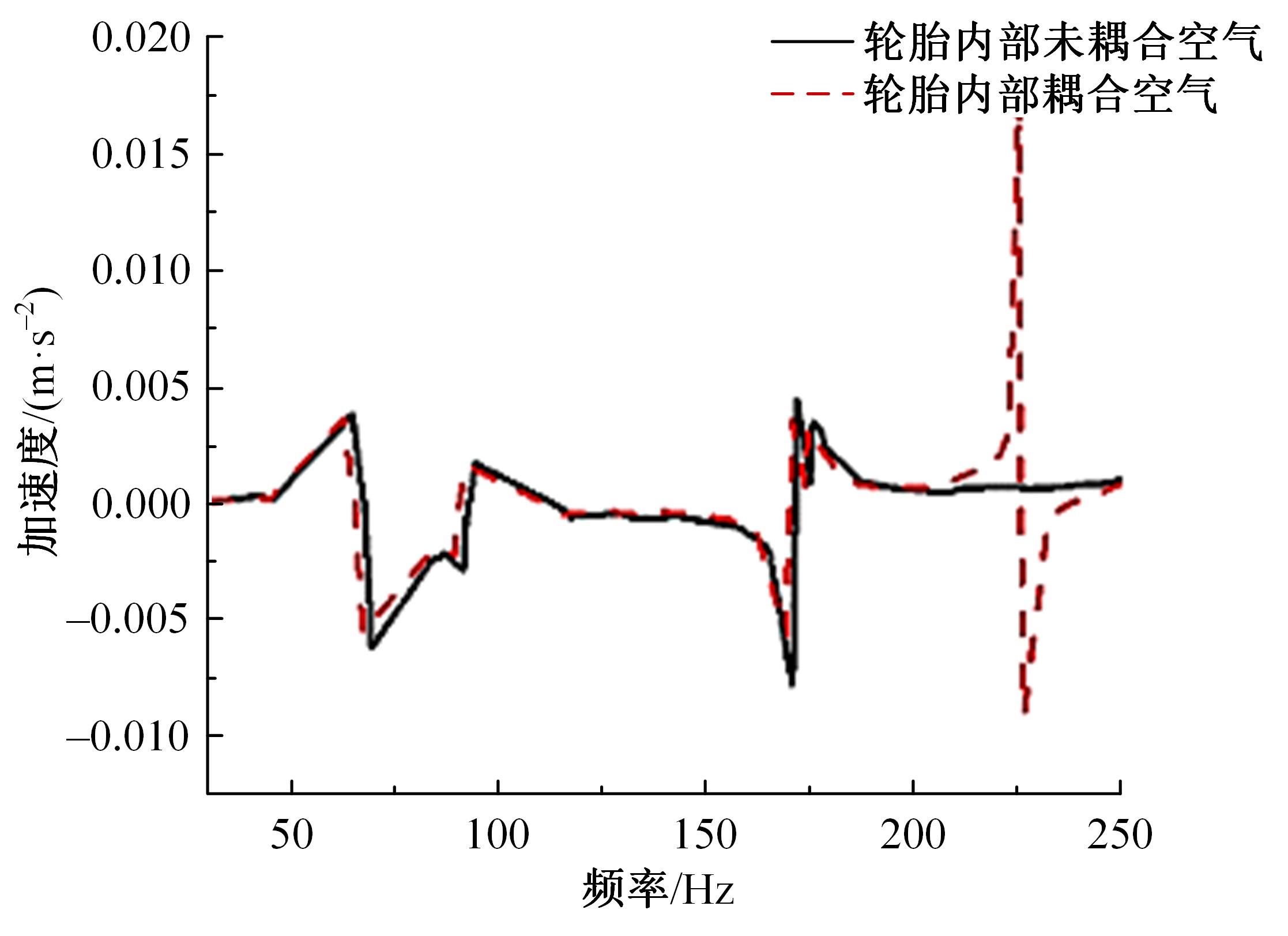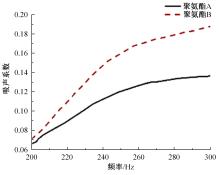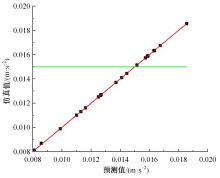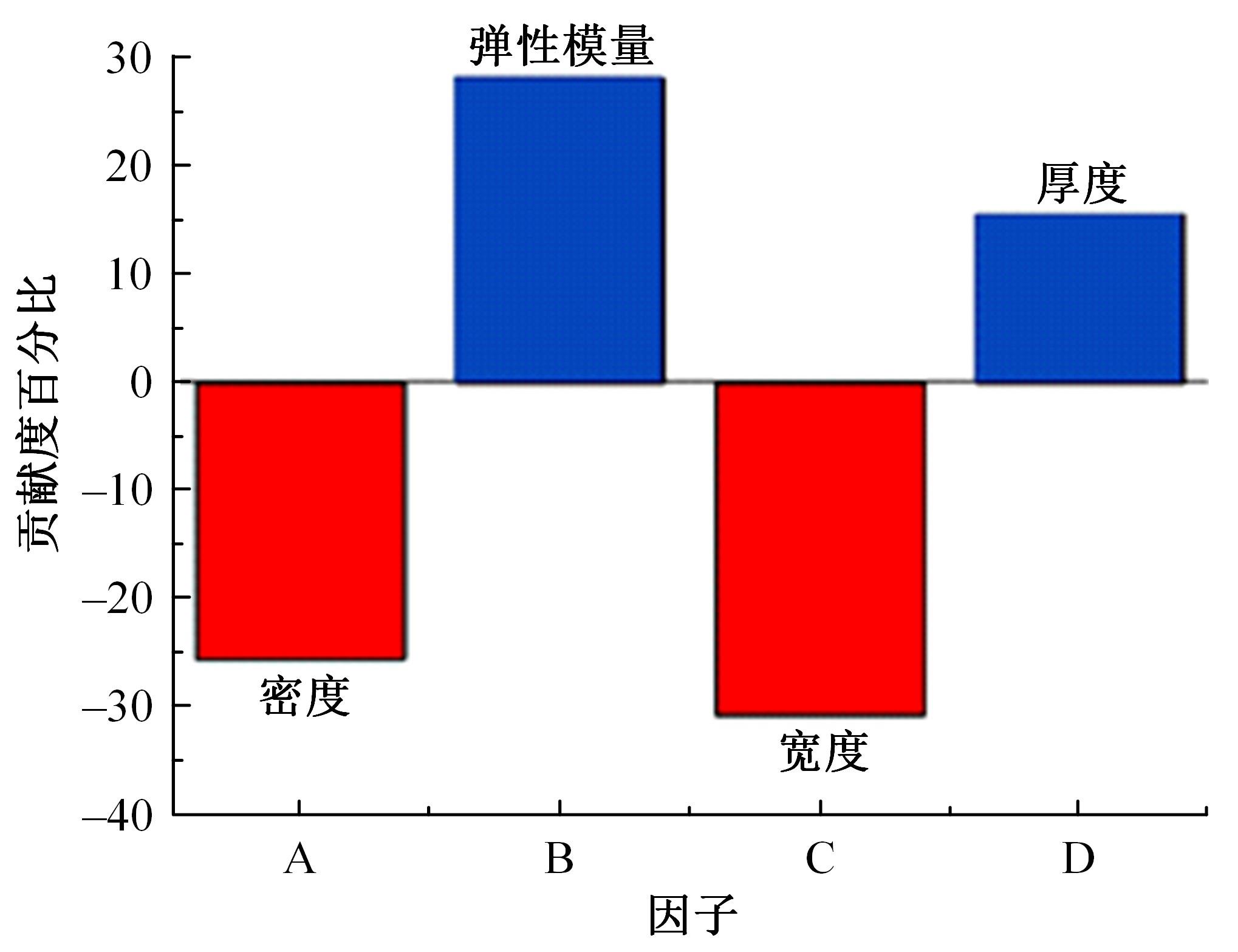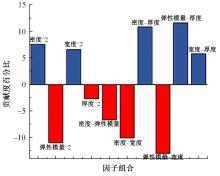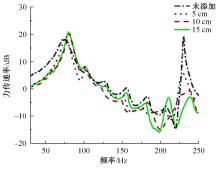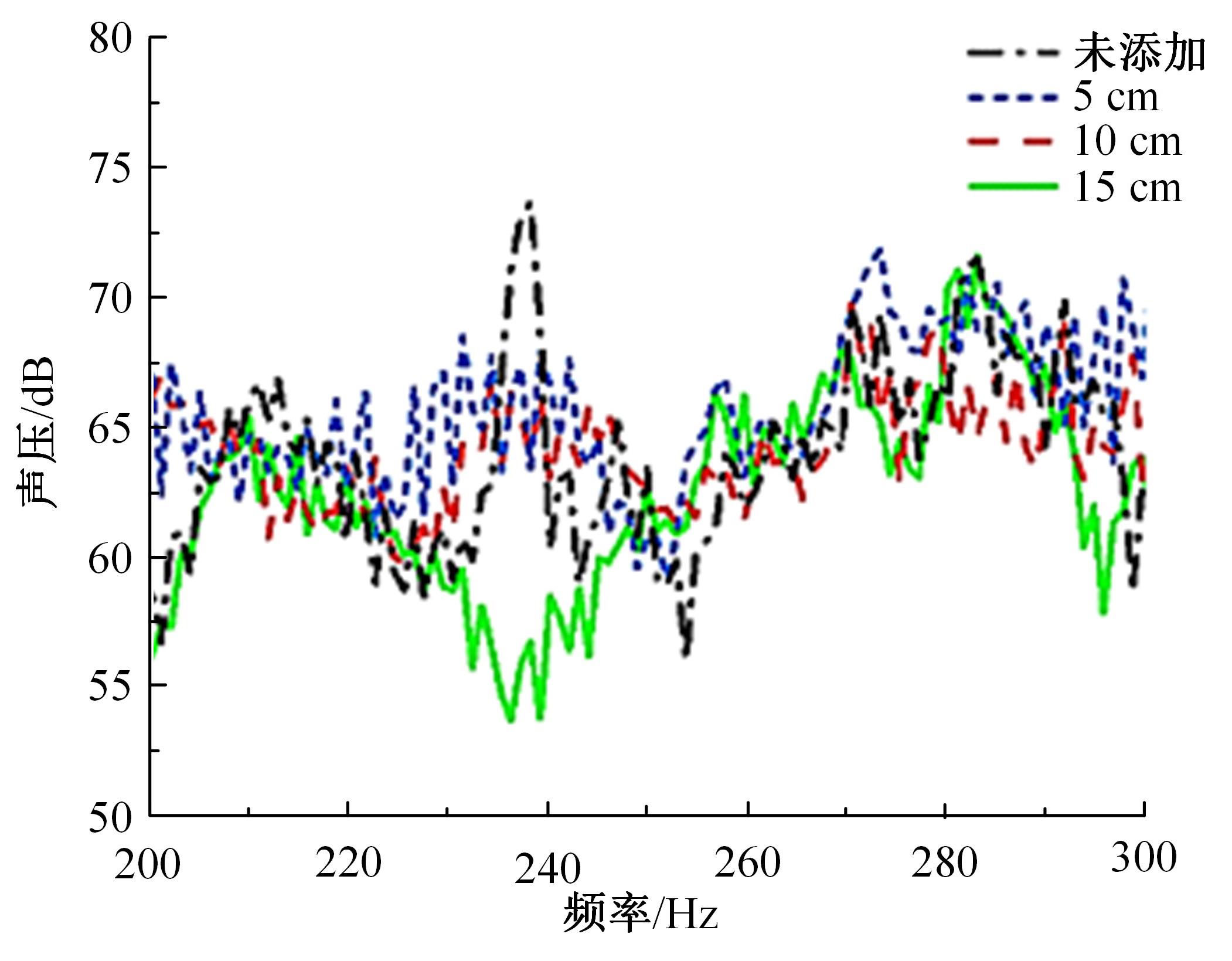Journal of Jilin University(Engineering and Technology Edition) ›› 2023, Vol. 53 ›› Issue (10): 2741-2751.doi: 10.13229/j.cnki.jdxbgxb.20211344
Effects of porous sound absorbing materials on tire cavity noise
Jian YANG1( ),Hui-yun LI1,Hai-chao ZHOU1(
),Hui-yun LI1,Hai-chao ZHOU1( ),Guo-lin WANG1,Ling-xin ZHANG2
),Guo-lin WANG1,Ling-xin ZHANG2
- 1.School of Automotive and Traffic Engineering,Jiangsu University,Zhenjiang 212013,China
2.AEOLUS Tyre Co. ,Ltd. ,Jiaozuo 454003,China
CLC Number:
- U463
| 1 | 梁晨,赵璠,王国林,等. 基于新非自然平衡轮廓设计的载重子午线轮胎振动辐射噪声的研究[J]. 振动工程学报,2015,28(5):800-808. |
| Liang Chen, Zhao Fan, Wang Guo-lin, et al. Tire vibration noise study of radial truck tire based on a new non-natural equilibrium design[J]. Journal of Vibration Engineering, 2015,28(5):800-808. | |
| 2 | 刘伟,韩腾飞,刘二宝.轮胎空腔模态预测方法研究[J]. 轮胎工业,2018,38(8):456-458. |
| Liu Wei, Han Teng-fei, Liu Er-bao. Research on modal prediction method of tire cavity[J]. Tire Industry, 2018, 38(8): 456-458. | |
| 3 | Yamauchi H, Akiyoshi Y. Theoretical analysis of tire acoustic cavity noise and proposal of improvement technique[J]. JSAE Review, 2002, 23(1): 89-94. |
| 4 | Tanaka Y, Horikawa S, Murata S. An evaluation method for measuring SPL and mode shape of tire cavity resonance by using multi-microphone system[J]. Applied Acoustics, 2016, 105: 171-178. |
| 5 | Lee H, Kim M T, Taheri S. Estimation of tire-road contact features using strain-based intelligent tire[J]. Tire Science and Technology, 2018, 46(4): 276-293. |
| 6 | Sakata T, Morimura H, Ide H. Effects of tire cavity resonance on vehicle road noise[J]. Tire Science and Technology, 1990, 18(2): 68-79. |
| 7 | Molisani L R, Burdisso R A, Tsihlas D. A coupled tire structure/acoustic cavity model[J]. International Journal of Solids And Structures, 2003, 40(19): 5125-5138. |
| 8 | Mohamed Z. A study of tyre cavity resonance noise mechanism and countermeasures using vibroacoustic analysis[D]. Kuala Lumpur: University Putra Malaysia, 2014. |
| 9 | Thomas S. A new analytical tire model for determining the effect of damping foam on tire/vehicle vibration[D]. Akron: The University of Akron, 2019. |
| 10 | Periyathamby H. Helmholtz resonator for reducing tire cavity resonance and in-vehicle noise[J]. Canadian Acoustics, 2004, 32(4): 27-31. |
| 11 | Mohamed Z, Wang X. A study of tyre cavity resonance and noise reduction using inner trim[J]. Mechanical Systems and Signal Processing, 2015, 50: 498-509. |
| 12 | Li T. Literature review of tire-pavement interaction noise and reduction approaches[J]. Journal of Vibroengineering, 2018, 20(6): 2424-2452. |
| 13 | Hatch Daniel. Hankook unveils “sound absorber” tech for quieter drive[EB/OL]. [2018-04-01]. . |
| 14 | Zhang Y B, Yao Q, Xiao L, et al. On the resonance of a lined tire cavity[J]. Acta Acustica united with Acustica, 2019, 105(6): 1237-1242. |
| 15 | Mohamed Z. Tire cavity resonance mitigation using acoustic absorbent materials[J]. Journal of Vibration and Control, 2017, 23(10): 1607-1622. |
| 16 | Baro S, Abom M. Tyre cavity noise: porous materials as a countermeasure[C]∥The 45th International Congress and Exposition on Noise Control Engineering: Towards a Quieter Future, Hamburg, Germany, 2016: 6730-6735. |
| 17 | Baro S, Corradi R, Abom M, et al. Modelling of a lined tyre for predicting cavity noise mitigation[J]. Applied Acoustics, 2019, 155: 391-400. |
| 18 | 赵阳阳, 李俊鹏, 张芳. 车轮轮胎力传递率试验和计算方法研究[J]. 上海汽车, 2015(12): 24-28. |
| Zhao Yang-yang, Li Jun-peng, Zhang Fang. Research on test and calculation method of wheel tire force transmissibility[J]. Shanghai Auto, 2015(12): 24-28. | |
| 19 | 明杰婷. 橡胶材料粘弹性本构模型的研究及其在胎面橡胶块上的应用[D]. 长春:吉林大学汽车工程学院,2016. |
| Ming Jie-ting. The research of viscoelastic constitutive model for rubber material and its application in tread block of tires[D]. Changchun: College of Automotive Engineering, Jilin University, 2016. | |
| 20 | 丁凤龙. 子午线轮胎动力学与滚动噪声的分析研究[D]. 北京: 北京化工大学材料科学与工程学院,2018. |
| Ding Feng-long. Study of radial tire dynamics and rolling noise analysis[D]. Beijing: College of Material Sciences and Engineering, Beijing University of Chemical Technology, 2018. | |
| 21 | 王国林, 丁俊杰, 周海超, 等. 智能轮胎力的敏感响应区域及变量[J]. 吉林大学学报:工学版, 2020, 50(6): 1983-1990. |
| Wang Guo-lin, Ding Jun-jie, Zhou Hai-chao, et al. Force-sensitive response area and variable of intelligent tire[J]. Journal of Jilin University(Engineering and Technology Edition), 2020, 50(6): 1983-1990. | |
| 22 | Cao L, Fu Q, Si Y, et al. Porous materials for sound absorption[J]. Composites Communications, 2018, 10: 25-35. |
| 23 | 杨永宝. 轮胎空腔振动模型与降噪研究[D]. 北京: 清华大学车辆与运载学院,2018. |
| Yang Yong-bao. Study on the tire cavity vibration model and noise reduction[D]. Beijing: College of Vehide and Mobility, Tsinghua University,2018. | |
| 24 | Brennan M J, To W M. Acoustic properties of rigid-frame porous materials—an engineering perspective[J]. Applied Acoustics, 2001, 62(7): 793-811. |
| 25 | Simpson T W, Mauery T M, Korte J J, et al. Kriging models for global approximation in simulation-based multidisciplinary design optimization[J]. AIAA journal, 2001, 39(12):2233-2241. |
| 26 | 马芳武,韩露,周阳,等. 采用聚乳酸复合材料的汽车零件多材料优化设计[J]. 吉林大学学报:工学版, 2019, 49(5):1385-1391. |
| Ma Fang-wu, Han Lu, Zhou Yang, et al. Multi material optimal design of vehicle product using polylactic acid composites[J]. Journal of Jilin University(Engineering and Technology Edition), 2019,49(5):1385-1391. | |
| 27 | 周海超, 夏琦, 王国林, 等.轮胎空腔共振噪声与力传递率关系的试验研究[J]. 汽车工程, 2021, 43(3): 429-436, 449. |
| Zhou Hai-chao, Xia Qi, Wang Guo-lin, et al. Experimental study on the relationship between tire cavity resonance noise and tire force transmissibility[J]. Automotive Engineering, 2021, 43(3): 429-436, 449. |
| [1] | Zhao-wei CHEN,Qian-hua PU. Suppression characteristics of vehicle⁃bridge coupling vibration of long⁃span cable⁃stayed bridge with resilient wheels [J]. Journal of Jilin University(Engineering and Technology Edition), 2023, 53(9): 2519-2532. |
| [2] | Ping-yi LIU,Xiao-ting LI,Ruo-lin GAO,Hai-tao LI,Wen-jun WEI,Ya WANG. Design and experiment of tilt-driving mechanism for the vehicle [J]. Journal of Jilin University(Engineering and Technology Edition), 2023, 53(8): 2185-2192. |
| [3] | Xue-jin HUANG,Jin-xing ZHONG,Jing-yu LU,Ji ZHAO,Wei XIAO,Xin-mei YUAN. Electric vehicle charging load forecasting method based on user portrait [J]. Journal of Jilin University(Engineering and Technology Edition), 2023, 53(8): 2193-2200. |
| [4] | Shu-pei ZHANG,Ming-yue XIA,Wei ZHANG,Zhao CHEN,Yi-xiang CHEN. Impact dynamic modeling and simulation for ball joint with clearance considering nonlinear stiffness [J]. Journal of Jilin University(Engineering and Technology Edition), 2023, 53(8): 2227-2235. |
| [5] | Hui CHEN,Ya-jun SHAO. Measurement method of pavement surface spectrum with multi⁃sensor coupling based on inertial benchmark [J]. Journal of Jilin University(Engineering and Technology Edition), 2023, 53(8): 2254-2262. |
| [6] | Lei CHEN,Yang WANG,Zhi-sheng DONG,Ya-qi SONG. A vehicle agility control strategy based on steering intent [J]. Journal of Jilin University(Engineering and Technology Edition), 2023, 53(5): 1257-1263. |
| [7] | Xin CHEN,Guan-chen ZHANG,Kang-ming ZHAO,Jia-ning WANG,Li-fei YANG,De-rong SITU. Influence of lap welds on the lightweight design of welded aluminum structures [J]. Journal of Jilin University(Engineering and Technology Edition), 2023, 53(5): 1282-1288. |
| [8] | Yong ZHANG,Feng-zhao MAO,Shui-chang LIU,Qing-yu WANG,Shen-gong PAN,Guang-sheng ZENG. Optimization on distortion grid of vehicle external flow field based on Laplacian Algorithm [J]. Journal of Jilin University(Engineering and Technology Edition), 2023, 53(5): 1289-1296. |
| [9] | Shao-hua WANG,Kun CHU,De-hua SHI,Chun-fang YIN,Chun LI. Robust compound coordinated control of HEV based on finite⁃time extended state observation [J]. Journal of Jilin University(Engineering and Technology Edition), 2023, 53(5): 1272-1281. |
| [10] | Yan-li YIN,Xue-jiang HUANG,Xiao-liang PAN,Li-tuan WANG,Sen ZHAN,Xin-xin ZHANG. Hierarchical control of hybrid electric vehicle platooning based on PID and Q⁃Learning algorithm [J]. Journal of Jilin University(Engineering and Technology Edition), 2023, 53(5): 1481-1489. |
| [11] | Gui-shen YU,Xin CHEN,Zi-tao WU,Yi-xiong CHEN,Guan-chen ZHANG. Analysis of microstructure and mechanical properties of probeless friction stir spot welding joint in AA6061⁃T6 aluminum thin plate [J]. Journal of Jilin University(Engineering and Technology Edition), 2023, 53(5): 1338-1344. |
| [12] | Yan-tao TIAN,Xing HUANG,Hui-qiu LU,Kai-ge WANG,Fu-qiang XU. Multi⁃mode behavior trajectory prediction of surrounding vehicle based on attention and depth interaction [J]. Journal of Jilin University(Engineering and Technology Edition), 2023, 53(5): 1474-1480. |
| [13] | Hong-bo YANG,Wen-ku SHI,Zhi-yong CHEN,Nian-cheng GUO,Yan-yan ZHAO. Multi⁃objective optimization of macro parameters of helical gear based on NSGA⁃Ⅱ [J]. Journal of Jilin University(Engineering and Technology Edition), 2023, 53(4): 1007-1018. |
| [14] | Rui ZHAO,Yun LI,Hong-yu HU,Zhen-hai GAO. Vehicle collision warning method at intersection based on V2I communication [J]. Journal of Jilin University(Engineering and Technology Edition), 2023, 53(4): 1019-1029. |
| [15] | Xiao-bo CHEN,Ling CHEN. Variational Bayesian cooperative target tracking with unknown localization noise statistics [J]. Journal of Jilin University(Engineering and Technology Edition), 2023, 53(4): 1030-1039. |
|
||

